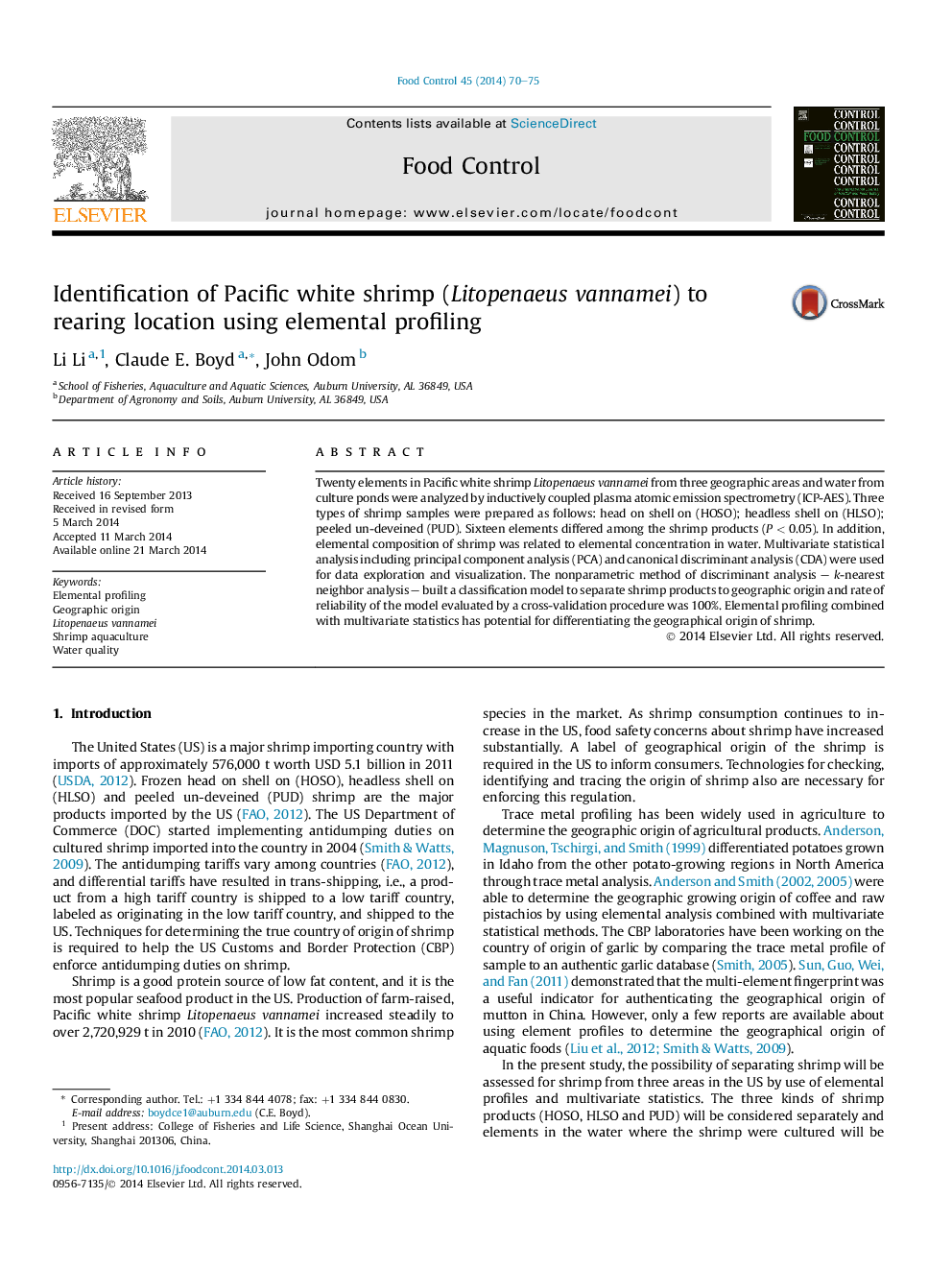| Article ID | Journal | Published Year | Pages | File Type |
|---|---|---|---|---|
| 6391601 | Food Control | 2014 | 6 Pages |
â¢Elemental profiling was successfully used to identify geographic origin of shrimp.â¢Elemental composition of shrimp was related to elemental concentration in water.â¢Separate databases are needed for different shrimp products to identify their origin.
Twenty elements in Pacific white shrimp Litopenaeus vannamei from three geographic areas and water from culture ponds were analyzed by inductively coupled plasma atomic emission spectrometry (ICP-AES). Three types of shrimp samples were prepared as follows: head on shell on (HOSO); headless shell on (HLSO); peeled un-deveined (PUD). Sixteen elements differed among the shrimp products (PÂ <Â 0.05). In addition, elemental composition of shrimp was related to elemental concentration in water. Multivariate statistical analysis including principal component analysis (PCA) and canonical discriminant analysis (CDA) were used for data exploration and visualization. The nonparametric method of discriminant analysis - k-nearest neighbor analysis - built a classification model to separate shrimp products to geographic origin and rate of reliability of the model evaluated by a cross-validation procedure was 100%. Elemental profiling combined with multivariate statistics has potential for differentiating the geographical origin of shrimp.
